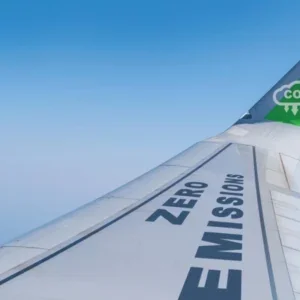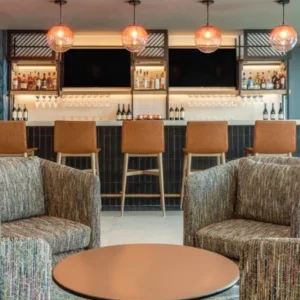This September, Norwegian will launch the longest-ever low-cost route: a non-stop flight between London Gatwick and Changi, Singapore, at 12 hours and 45 minutes. It’s part of an aggressive expansion strategy, and the carrier is in good company: the low-cost long-haul sector is still small, but is undeniably up and running. Air France-KLM and International Airlines Group (IAG) recently announced their own budget long-haul ventures, and although the sector still accounts for less than 0.5% of total seat capacity worldwide, global low-cost long-haul seats are on track to exceed 500,000 this year.
Traditionally, this has been a tricky field for new airlines. The small size of the market necessitated small fleets, which meant minor fluctuations in oil prices and demand could bring an airline to its knees, or at least prevent it from ever becoming really profitable. Jetstar and AirAsia X, which is currently the largest low-cost carrier (LCC) flying long-haul, led the charge in 2007, and in the wake of its success, premium and legacy carriers are beginning to see low-cost long-haul as a valid field for competition.
Big prospects
Once Norwegian launches its 20 planned new routes this year, it will overtake Singapore Airlines subsidiary Scoot as the second-largest low-cost long-haul airline in the world, lagging only behind AirAsia X.
“The global carriers are not going to just sit around and wait for their customers to be taken away,” says Henry Harteveldt, travel industry analyst and president of Atmosphere Research Group. “They realise that they have to respond in a way that’s beyond simply offering a discount fare.”
Another reason for the recent rise in confidence is that aviation technology has moved on. The Laker Skytrain of the 1970s and early 1980s serves as a legend and cautionary tale for low-cost long-haul. Flying between New York and London from $135 one way, the carrier struggled to fill the 345 seats on its wide-body aircraft, later introducing the idea of ultra-low fares with assigned seating as a premium extra. As oil prices rose and a recession hit, Laker found itself unable to keep up with its hasty expansion and finance its fleet, and it declared bankruptcy in 1982 after only five years of operation.
The introduction of the lightweight, mid-size Boeing 787 Dreamliner in 2011, with 20% better fuel efficiency than its predecessor, marked a turning point for low-cost long-haul ventures. New narrow-body aircraft like the Dreamliner’s successor, the Boeing 737 MAX, and the Airbus A321LR are small and efficient while also having the range for long-haul. Norwegian will be using the 737 Max for transatlantic flights beginning soon.
“For Norwegian, the arrival of the Dreamliner aircraft was the game-changer that first allowed our low-cost long-haul routes to begin,” says Norwegian’s UK head of communications Stuart Buss. “The Boeing 737 MAX looks set to be the next game-changer, and opens up a wide range of new possibilities to fly long-haul routes with a single-aisle aircraft for the first time.”
“Now that there’s 300-minute ETOPS certification available for certain planes, the combination of changes in technology and aircraft reliability in the regulatory environment will allow a much greater opportunity for ultra-low-cost long-haul airlines to bridge markets,” Harteveldt says. “It opens up many more city pairs, and it means that, for an airport that is creative and can work with carriers, the ability to attract and retain long-haul flying is probably greater now than ever in airline history.”
As a major hub for LCCs, Changi was keen to take advantage of the current climate to once again pick up Europe as a growth sector. Its first long-haul flights in 2010 were operated by Jetstar, which was overtaken in 2012 by Scoot. However, long-haul flights from Singapore are generally bound for Australia, the Middle East and New Zealand. Australian legacy carrier Qantas dropped its Singapore–London connections in 2013 in favour of Dubai– London, which makes the Gatwick connection a welcome injection of extra capacity for both airports.
“The Singapore route is strategically important for Norwegian’s Gatwick operation as it provides the first link with Asia. It is also strategically important for Gatwick itself as the airport has historically struggled to attract – and, in some cases, maintain – routes to Asia,” writes CAPA analyst Brendan Sobie in a report examining the impact of Norwegian’s launch. The report adds that, while Norwegian is unlikely to enter a code-sharing agreement for connections in Asia beyond Singapore, it has been in early discussions with AirAsia, which will be moving into the new Terminal 4 at Changi next year. Jetstar Asia, which already operates from Changi, could also be a contender.
In the meantime, other European carriers are moving to beat their competition. IAG, owner of British Airways, Aer Lingus, Iberia and Vueling, launched its own low-cost long-haul carrier on 1 June. LEVEL is based in Barcelona to take advantage of codesharing with Vueling, with flights to San Francisco, the Dominican Republic, Buenos Aires and Los Angeles, and IAG says it’s considering expanding into other European cities. Air France unveiled a similar strategy when it announced subsidiary carrier Boost last November, with long-haul services planned to begin in mid-2018.
“LEVEL is one of the more intriguing start-ups, being part of IAG, which has proved to be very canny. IAG tend not to do things that lose money for a long time,” says Gerald Khoo, an airlines analyst at Liberum Capital.
Stay profitable
Their strong parent entities may protect them from being vulnerable to small disruptions, but Boost and LEVEL still have plenty of hurdles ahead.
“The biggest challenge is getting the cost base down low enough so that it’s genuinely low-cost,” says Khoo. “Being low fare is straightforward; you just cut your prices – the question is, can you be profitable at that level?”
There’s more to it than charging for extras like food, seat selection and bags, Harteveldt says. “While you need to have simplified pricing for the consumer, that doesn’t mean you have to have a basic pricing structure. Norwegian uses revenue management, as does WOW Air and AirAsia X – they take advantage of branded fares or fare families. It’s simple and intuitive for consumers to find value, but underneath the surface they have, I would expect, as complex a pricing structure as many of their better-known global competitors.”
The low fares also mean that assets take on a new significance. The pressure is higher than usual to turn every aircraft around as quickly as possible between journeys to make the most of its revenue potential, but back-to- back long-haul flights can quickly run foul of time differences, to be hampered by airport curfews or commercially unfavourable hours.
Although a new brand can allow an airline to keep its cost base down and operate unrestricted by expectations of premium service levels, Harteveldt says the public perception and trust engendered by a recognised name is also important. “You have to have a brand that gives you credibility to say, yes, we can take you across an ocean – and with the same value and the same reliability, or better, than you have come to expect from our short to medium-haul flights.”
The upper hand Here, Norwegian has the upper hand, as an established brand. Canadian LCC Westjet has pursued a similar strategy, adding flights between London Gatwick and Vancouver, Calgary and Toronto in 2015. However, Ryanair and easyJet, two of the biggest LCC names in Europe, are showing no signs of deviating from their current short to medium-haul model.
“I think it’s a case of they’ve got too much to do,” says Khoo. “There are too many opportunities in their core business in short-haul for them to want to go on a diversion into long-haul operations that would entail additional risk, start-up costs and management distraction.”
If they ever did launch long-haul routes, Khoo says, they’re bound to come out swinging.
“You’d expect them to be very focused and very bold in their rollout,” he says. “Michael O’Leary, the Ryanair CEO, has always said that he would want to do it in scale and roll out very quickly, and that makes sense: because, firstly, you would want to get through the start-up phase of having only a few aircraft as quickly as possible to start building economies of scale, but you also would want to build a broad geographic footprint in terms of the route network to make it harder for competitors to counterattack.”
Among Middle Eastern carriers, which have yet to launch such counterattacks, opinions differ on whether the growth of the low-cost long-haul sector is truly a threat. Emirates president Sir Tim Clark has described it as a “gathering storm”. At the ITB travel fair in March, Clark told the press that Emirates was “streamlining and stripping out costs” to cope with the pressure of the changing market. Meanwhile, Qatar Airways CEO Akbar Al Baker says he’s confident that the danger has been overstated. In his view, the sector is struggling to survive and oil prices will eventually trip up the new carriers as they have done in the past, despite the improvements in aircraft fuel efficiency.
Harteveldt believes Al Baker’s blithe attitude stems from Qatar Airways’ clear value proposition to a core market of mid-scale to high-end flyers. While Clark’s comments ironically echo the sentiments of North American carriers currently feeling threatened by Emirates’ plans for expansion. However, he adds, “Emirates doesn’t want to lose any of their customers to these carriers because when you’re flying nothing but 777-300s and A380s, you have a very extensive fleet of aircraft to maintain, and you have to defend your business aggressively because you need the revenue.”
Both ends of the plane
Khoo agrees that a “no frills” product would have a limited appeal for the traditionally multi-class Middle Eastern operators, and says it’s unlikely that either carrier will enter the low-cost long-haul fray any time soon.
“The Middle Eastern carriers need their premium cabins to make money. Just as the likes of a British Airways does, they need both ends of the plane. It may be that the model can be successful with people who are pursuing different network strategies that are not quite so reliant on connecting traffic.”
Changing network strategies are part of Norwegian’s plan. “The industry is already moving towards a point-to-point model,” says Buss from Norwegian. “Passengers should not have to connect through big hubs to get to their destination if there are possibilities to offer direct services instead. This is why, with its new 737 MAX routes this summer in Europe, Norwegian has focused on cities that do not have direct transatlantic routes – such as Cork or Belfast – together with cities that would benefit from greater choice of direct transatlantic routes, such as Edinburgh or Dublin.”
With new carriers springing up like wildflowers, it certainly seems as if the sector’s time in the doldrums is at an end, but the future of the landscape is still up for vigorous debate. For now, Norwegian dominates European skies, but it may not hold on to that position for long. Ultimately, Harteveldt believes the diversification of the low-cost long-haul sector is long overdue. “It democratises travel enormously. There’s no downside to this, there really isn’t.”






